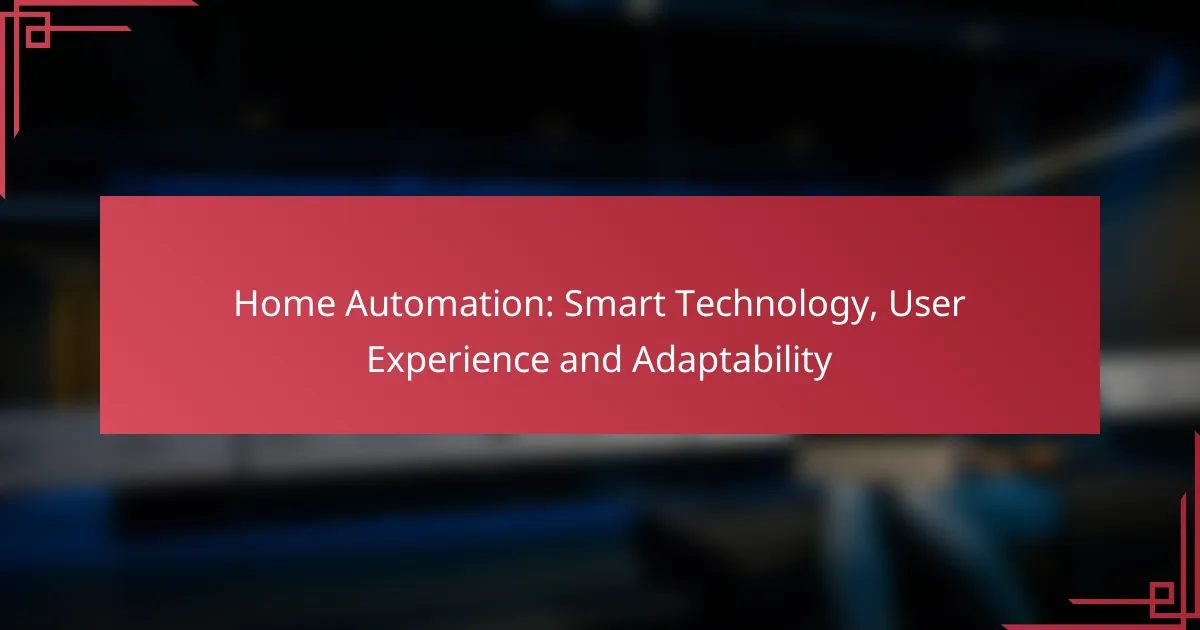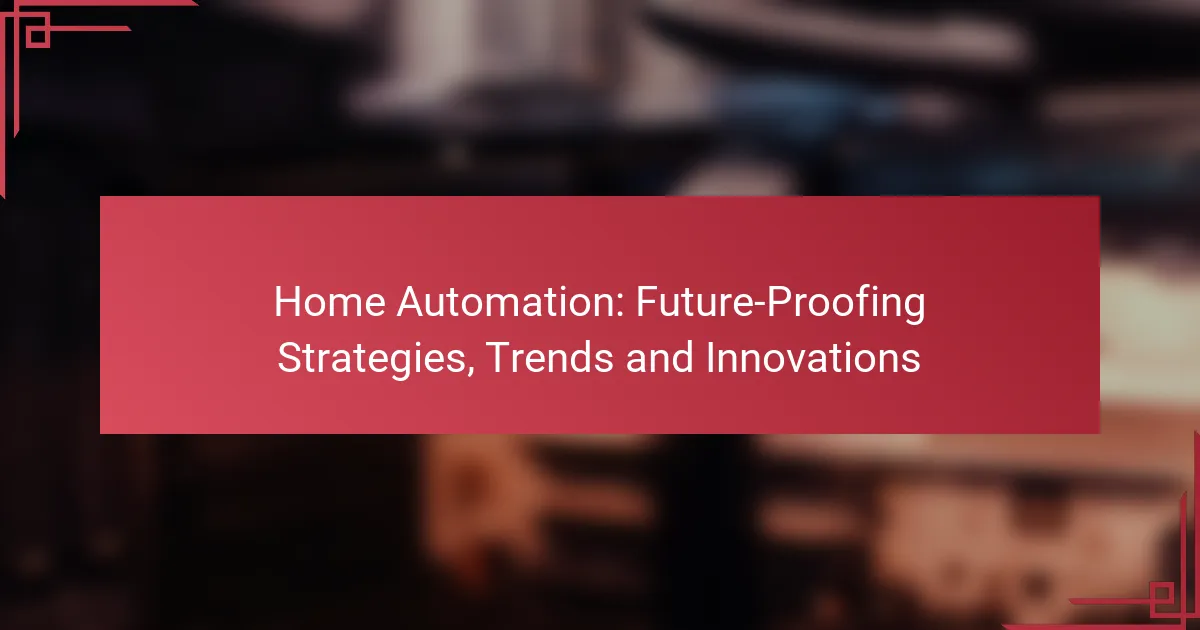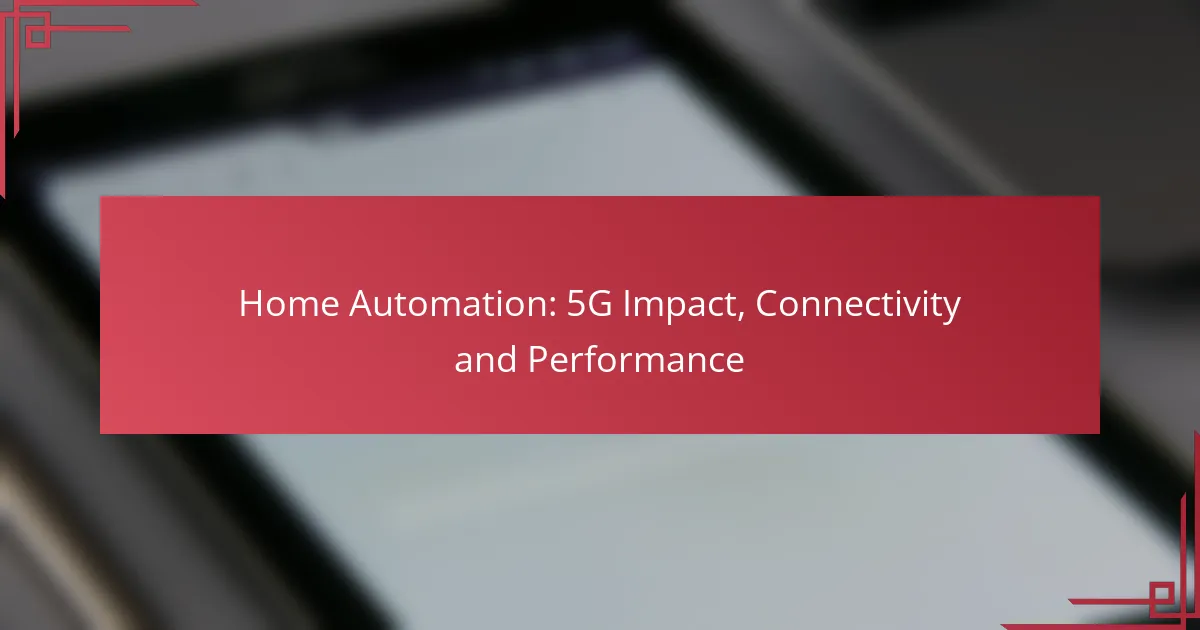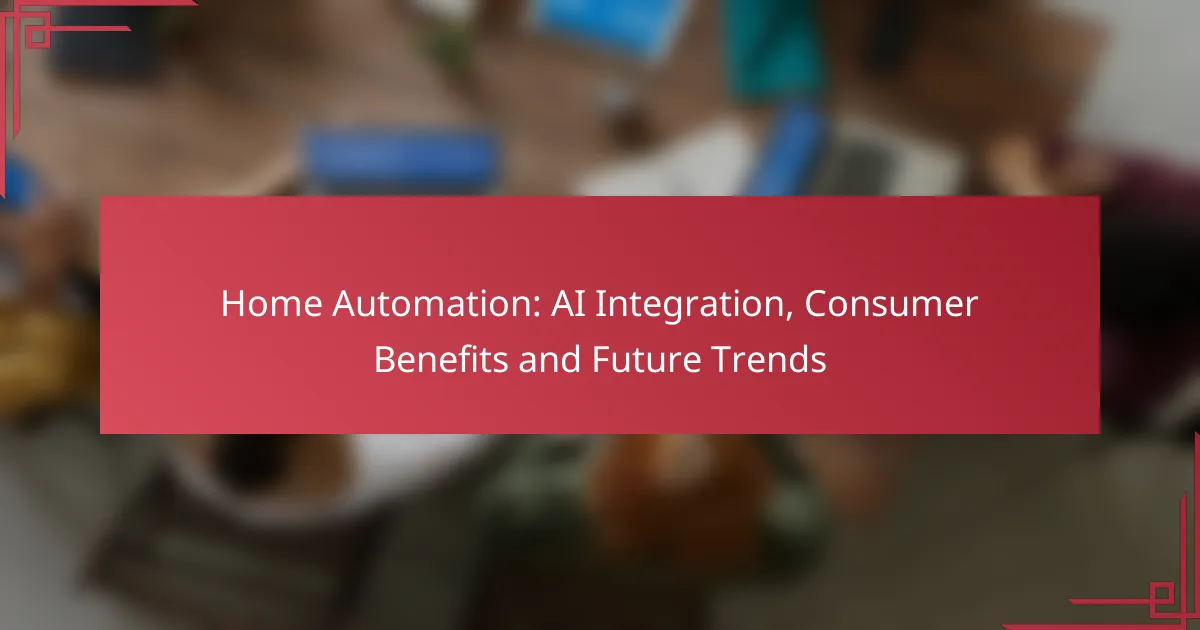Home automation is revolutionizing how we interact with our living spaces, offering smart technology that enhances convenience, security, and energy efficiency. By integrating seamlessly with existing systems, these solutions provide a customizable experience that adapts to individual user preferences, ultimately improving comfort and efficiency in daily life.

What are the best home automation solutions in Ireland?
The best home automation solutions in Ireland include a range of smart devices that enhance convenience, security, and energy efficiency. Popular options are designed to integrate seamlessly with existing home systems, offering users a customizable experience tailored to their needs.
Amazon Echo with Alexa integration
The Amazon Echo, equipped with Alexa, serves as a central hub for controlling various smart devices in your home. Users can issue voice commands to manage lights, thermostats, and security systems, making it a user-friendly choice for home automation.
When considering the Echo, ensure compatibility with your existing devices. The Echo supports a wide range of brands, but checking compatibility can save time and frustration. Additionally, the device’s ability to create routines allows for automation of multiple tasks with a single command.
Google Nest Hub for smart control
The Google Nest Hub provides an intuitive interface for managing smart home devices through voice or touch. Its display offers visual feedback, making it easy to see and control connected devices, from lights to cameras.
One key feature is the ability to integrate with Google Assistant, allowing for voice-activated control. The Nest Hub also supports a variety of third-party devices, so check for compatibility to maximize its potential. Consider placing the Hub in a central location for optimal access and visibility.
Philips Hue smart lighting systems
Philips Hue smart lighting systems offer customizable lighting solutions that can be controlled remotely. Users can adjust brightness, color, and schedules through a smartphone app or voice commands, enhancing both ambiance and energy efficiency.
When setting up Philips Hue, consider the range of available bulbs and fixtures to match your home’s aesthetic. The system also supports automation features, such as setting lights to turn on or off at specific times. Ensure your Wi-Fi network is robust enough to handle multiple devices for seamless operation.
Samsung SmartThings for device management
Samsung SmartThings acts as a comprehensive platform for managing various smart devices from different manufacturers. It allows users to create automation scenarios and monitor their home environment through a single app.
To get started with SmartThings, connect compatible devices and explore the automation options available. This platform supports a wide array of devices, but be mindful of the initial setup process, which may require some technical knowledge. Regularly update the app and devices to maintain security and functionality.
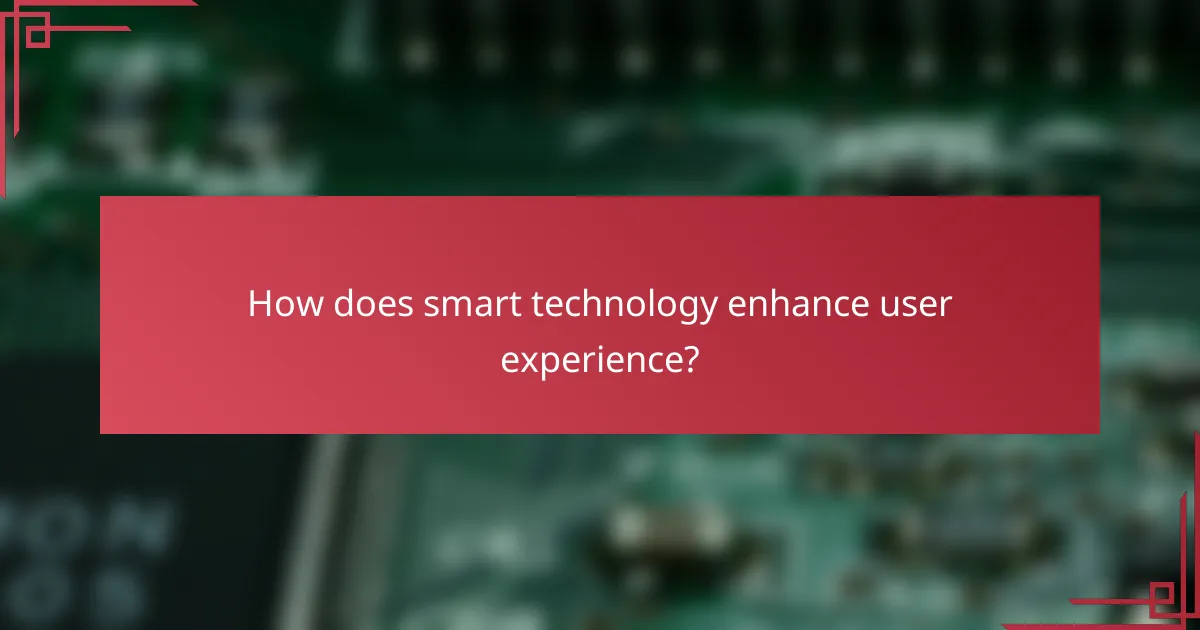
How does smart technology enhance user experience?
Smart technology enhances user experience by providing seamless integration, personalization, and convenience in daily tasks. Through automation and intuitive controls, users can tailor their environments to meet specific needs and preferences, resulting in increased comfort and efficiency.
Personalized automation settings
Personalized automation settings allow users to customize their smart devices according to individual preferences and routines. For instance, a smart thermostat can learn your schedule and adjust temperatures automatically, ensuring comfort when you are home and energy savings when you are away.
To set up personalized automation, consider factors such as your daily schedule, preferred lighting levels, and temperature settings. Many systems allow for easy adjustments through mobile apps, enabling you to refine settings as your lifestyle changes.
Voice control for convenience
Voice control technology simplifies interactions with smart devices, allowing users to operate them hands-free. This feature is particularly useful when multitasking or when physical access to devices is limited, such as when cooking or cleaning.
Devices like Amazon Echo or Google Nest can respond to voice commands for tasks like adjusting lights, playing music, or checking the weather. Ensure your devices are compatible with your preferred voice assistant to maximize convenience and functionality.
Remote access via mobile apps
Remote access through mobile apps provides users with the ability to control their smart home devices from anywhere. This feature is invaluable for monitoring security systems, adjusting heating or cooling, and managing appliances while away from home.
Most smart home systems offer user-friendly apps that allow for real-time notifications and control. When setting up remote access, prioritize security by using strong passwords and enabling two-factor authentication to protect your home network.
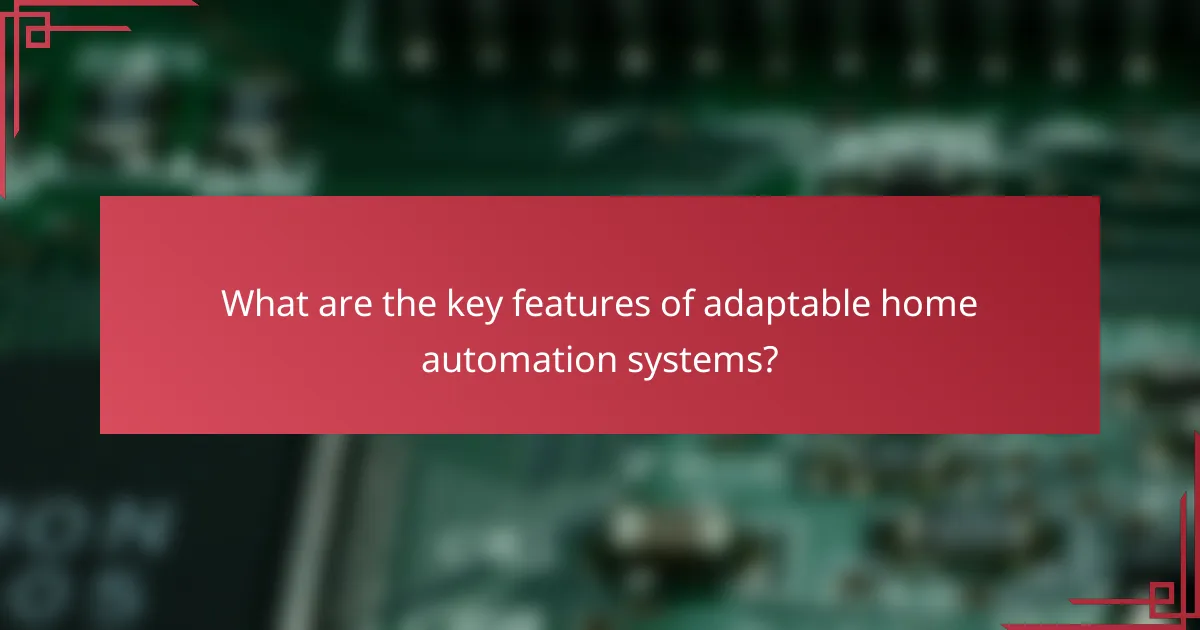
What are the key features of adaptable home automation systems?
Adaptable home automation systems are designed to be flexible and responsive to user needs, allowing for seamless integration of new devices and technologies. Key features include scalability, interoperability, and customizable user interfaces that enhance the overall user experience.
Scalability for additional devices
Scalability in home automation systems refers to the ability to easily add new devices without significant reconfiguration. This feature allows homeowners to expand their systems gradually, accommodating new technologies as they become available.
When selecting a scalable system, look for platforms that support a wide range of devices and protocols. For instance, systems that use Zigbee or Z-Wave standards often provide better scalability due to their compatibility with numerous third-party devices.
Interoperability with various brands
Interoperability ensures that devices from different manufacturers can communicate and work together within the same home automation system. This feature is crucial for creating a cohesive smart home environment where users can control all devices from a single interface.
To achieve interoperability, choose systems that support open standards or have established partnerships with multiple brands. This will not only enhance compatibility but also provide users with more options when selecting devices, potentially saving costs in the long run.
Customizable user interfaces
Customizable user interfaces allow users to tailor their home automation experience according to personal preferences and needs. This feature can include adjusting layouts, choosing themes, and setting up shortcuts for frequently used functions.
When evaluating systems, consider those that offer intuitive mobile apps or web interfaces that can be personalized. A well-designed interface can significantly improve user satisfaction and make managing smart home devices more efficient.

What factors should you consider when choosing home automation technology?
When selecting home automation technology, consider compatibility with existing devices, ease of installation, and overall costs. These factors will significantly influence your user experience and the adaptability of the system to your needs.
Compatibility with existing devices
Compatibility is crucial when choosing home automation technology, as it determines how well new devices will integrate with your current setup. Look for systems that support a wide range of protocols like Zigbee, Z-Wave, or Wi-Fi to ensure seamless communication between devices.
Before purchasing, check if your existing devices, such as smart bulbs, thermostats, or security cameras, are compatible with the new system. This can save you from investing in additional hardware or facing connectivity issues down the line.
Ease of installation and setup
Installation and setup can vary significantly between home automation systems. Some may require professional installation, while others are designed for easy DIY setup. Assess your comfort level with technology and choose a system that aligns with your skills.
Look for systems that offer user-friendly apps and clear instructions. A good rule of thumb is to opt for devices that can be set up in under an hour, allowing you to enjoy your smart home without unnecessary delays.
Cost of devices and subscriptions
The cost of home automation devices and any associated subscriptions can vary widely. Basic smart devices may start at low prices, while comprehensive systems with advanced features can reach higher price points. Consider both the initial investment and ongoing costs for subscriptions or cloud services.
When budgeting, factor in potential savings from energy-efficient devices or enhanced security features. A well-planned investment can lead to long-term benefits, so evaluate the total cost of ownership rather than just the upfront price.
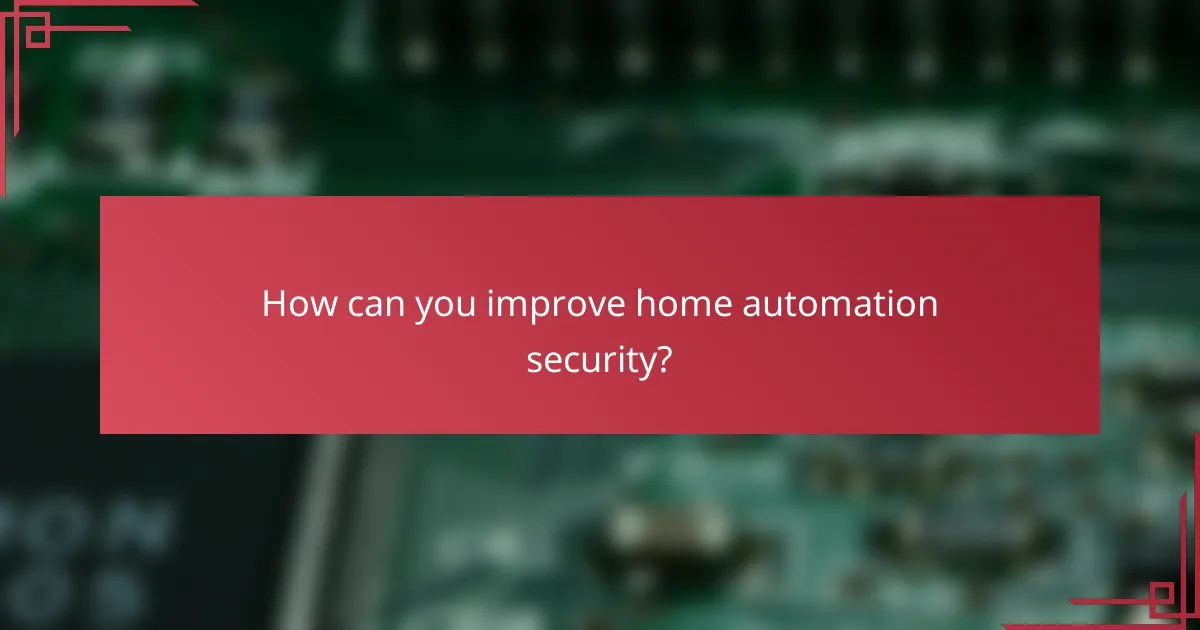
How can you improve home automation security?
Improving home automation security involves implementing multiple layers of protection to safeguard your devices and data. Key strategies include utilizing two-factor authentication, keeping software updated, and ensuring your Wi-Fi network is secure.
Two-factor authentication for access
Two-factor authentication (2FA) adds an extra layer of security by requiring not just a password but also a second form of verification, such as a text message code or an authentication app. This significantly reduces the risk of unauthorized access to your home automation systems.
When setting up 2FA, choose methods that are convenient yet secure. For instance, using an app like Google Authenticator or Authy is generally more secure than SMS codes, which can be intercepted.
Regular software updates for devices
Regularly updating the software on your smart devices is crucial for maintaining security. Manufacturers often release updates to patch vulnerabilities that could be exploited by hackers. Set your devices to update automatically whenever possible.
Check for updates at least once a month if automatic updates are not an option. This practice helps ensure your devices are protected against the latest threats and vulnerabilities.
Secure Wi-Fi network practices
Securing your Wi-Fi network is essential for protecting your home automation system. Start by changing the default router password to a strong, unique one and enable WPA3 encryption if available. This helps prevent unauthorized access to your network.
Additionally, consider creating a separate guest network for visitors. This keeps your main network, where your smart devices are connected, safer from potential threats introduced by guests.

What are the emerging trends in home automation?
Emerging trends in home automation focus on enhanced user experience, adaptability, and integration of smart technologies. Key developments include increased use of artificial intelligence, improved interoperability among devices, and a growing emphasis on energy efficiency.
Integration of AI and Machine Learning
The integration of artificial intelligence (AI) and machine learning into home automation systems allows devices to learn user preferences and behaviors. For example, smart thermostats can adjust temperatures based on past usage patterns, optimizing comfort and energy consumption.
As these technologies evolve, they enable more personalized experiences, such as voice-activated assistants that can manage multiple tasks simultaneously. This adaptability enhances user interaction and satisfaction with smart home systems.
Interoperability of Devices
Interoperability among various smart devices is becoming increasingly important in home automation. Users benefit from seamless communication between devices from different manufacturers, allowing for a more cohesive smart home ecosystem.
Standards such as Matter are emerging to facilitate this interoperability, ensuring that devices can work together regardless of brand. This trend simplifies user experience and reduces the frustration of managing multiple platforms.
Focus on Energy Efficiency
Energy efficiency is a significant trend in home automation, driven by both consumer demand and regulatory pressures. Smart devices, such as energy-efficient lighting and smart plugs, help monitor and reduce energy consumption, leading to lower utility bills.
Homeowners can utilize smart home systems to track energy usage in real-time, allowing for informed decisions about energy-saving practices. This not only benefits the environment but can also qualify users for local rebates or incentives in many regions.
